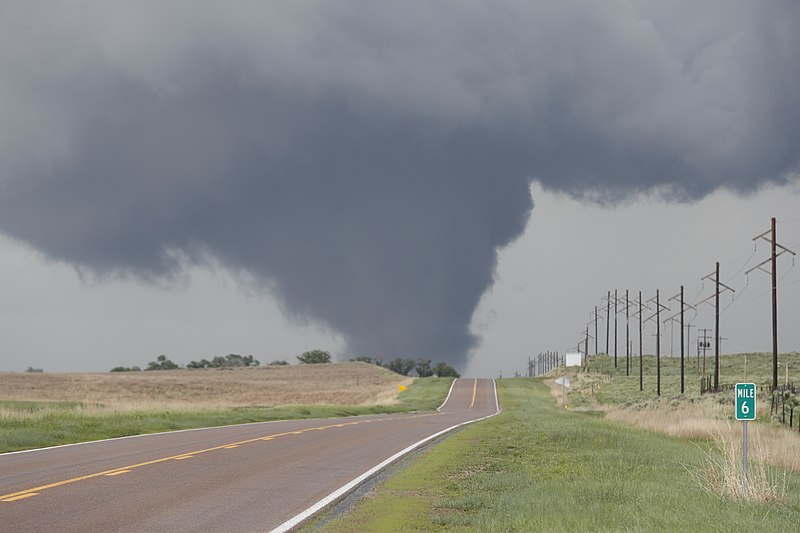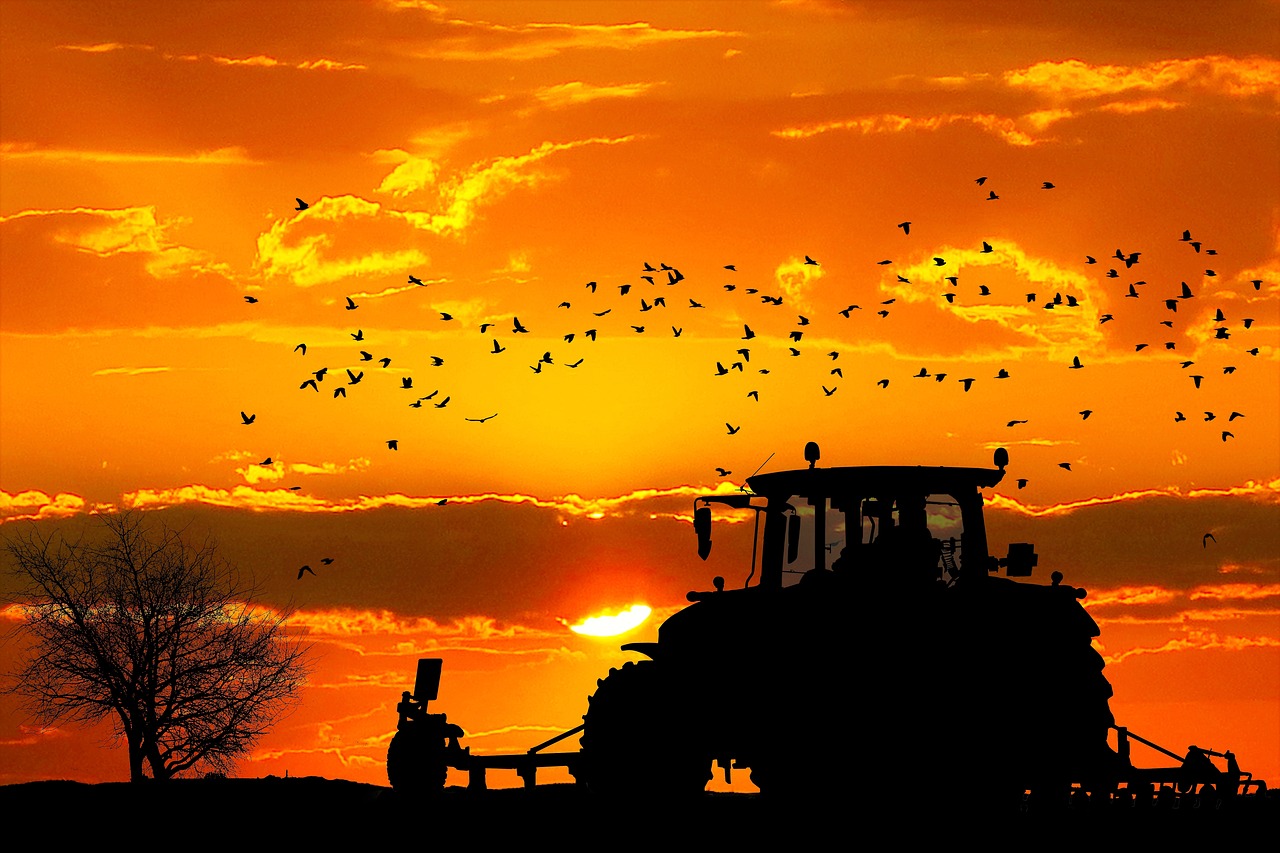Flyover States - Project 2025 and Farmers
A conservative USDA could unleash significant changes to food assistance programs, particularly through proposed reforms to SNAP. These changes might strip away critical support for vulnerable populations, leading to increased food insecurity and dependency on charity rather than government assistance. The removal of insurance programs designed to protect farmers from catastrophic losses could further destabilize agricultural operations, putting many producers at risk and threatening the nation’s food supply.
Moreover, the environmental implications of a conservative USDA could be dire. There is a push to dismantle NOAA, undermining vital climate research and weather forecasting, while privatizing the National Weather Service could jeopardize the accuracy and accessibility of crucial weather information. This could leave farmers and ranchers ill-equipped to respond to extreme weather events, further exacerbating environmental degradation and compromising sustainable agricultural practices.
A conservative USDA could also severely limit the CDC's ability to respond to animal-borne illnesses, such as bird flu, which poses significant risks to both public health and the agricultural sector. By stripping the CDC of its authority in this area, the government would undermine crucial surveillance and response mechanisms needed to contain outbreaks, potentially leading to widespread disease transmission among livestock and humans. This could endanger food safety and threaten the livelihoods of farmers, as outbreaks often result in costly culling of infected animals and market disruptions. It would also increase prices for consumers at the grocery store.
The combination of these policy shifts could create a perilous landscape for both the agricultural community and the environment, as the government moves away from supporting sustainable practices and towards a model that prioritizes profit over ecological health. This trajectory risks not only the stability of food production but also the very ecosystems that support agriculture.
Eliminate the Conservation Reserve Program, Agriculture Risk (ARC) and Price Loss Coverage (PLC), which provides financial protections to farmers in the event of a drop in crop prices/revenues
Why this is bad:
Eliminating programs like the Conservation Reserve Program, Agricultural Risk Coverage, and Price Loss Coverage would significantly jeopardize the financial stability of farmers. These programs serve as essential safety nets, protecting agricultural producers from the volatility of market prices and unforeseen circumstances, such as natural disasters or adverse weather conditions. Without these protections, farmers would be left vulnerable to drastic fluctuations in crop prices, potentially resulting in devastating economic losses. The absence of such support could discourage investment in sustainable practices and lead to decreased production, threatening food supply chains and increasing food prices for consumers. Furthermore, the loss of these programs would undermine the resilience of rural communities, making it more challenging for farmers to sustain their operations and maintain the viability of agriculture as a cornerstone of the economy.
Champion the elimination of the Conservation Reserve Program. Farmers should not be paid in such a sweeping way not to farm their land. If there is a desire to ensure that extremely sensitive land is not farmed, this should be addressed through targeted efforts that are clearly connected to addressing a specific and concrete environmental harm. The USDA should work with Congress to eliminate this overbroad program (p. 304).
Ideally, repeal the ARC and PLC programs. Farmers eligible to participate in ARC or PLC are generally already able to purchase federal crop insurance, policies that protect against shortfalls in expected revenue whether caused by lower prices or smaller harvests. The ARC program is especially egregious because farmers are being protected from shallow losses, which is another way of saying minor dips in expected revenue. This is hardly consistent with the concept of providing a safety net to help farmers when they fall on hard times. The Congressional Budget Office (CBO), in one of its options to reduce the federal deficit, has once again identified repealing all Title I farm programs, including ARC, PLC, and the federal sugar program. (p. 296-297).
Separate agricultural provisions and nutrition provisions. Separate farms from SNAP (food stamps).
Why this is bad:
The farm bill connects the food on our plates, the farmers and ranchers who produce that food, and the natural resources - our soil, air and water - that make growing food possible. Separating agricultural provisions from nutrition programs, such as SNAP, would have detrimental effects on both farmers and food-insecure individuals. This divide could undermine the stability of rural economies, as many farmers rely on SNAP benefits to ensure that their produce reaches low-income households. When agricultural and nutrition policies are intertwined, they create a mutually beneficial system that supports both food production and access. Removing this connection risks leaving farmers without a reliable market for their goods while simultaneously increasing food insecurity among vulnerable populations. This separation could lead to decreased funding and support for agricultural initiatives, ultimately resulting in reduced food production and higher prices for consumers. By decoupling these provisions, we risk creating a fragmented food system that fails to adequately address the needs of both farmers and those who depend on affordable, nutritious food.
Separate the agricultural provisions of the farm bill from the nutrition provisions. To have genuine reform and proper consideration of the issues, agricultural programs should be considered in separate legislation distinct from food stamps and the nutrition part of the farm bill, and reauthorization of such programs should be fixed on different timelines to ensure this separation. (p. 298).
Move the USDA food and nutrition programs to the Department of Health and Human Services. There are more than 89 current means-tested welfare programs, and total means-tested spending has been estimated to surpass $1.2 trillion between federal and state resources. Because means-tested federal programs are siloed and administered in separate agencies, the effectiveness and size of the welfare state remains largely hidden. There are means-tested food-support programs in the USDA (specially FNS), whereas most means-tested programs are at the Department of Health and Human Services (HHS). All means-tested anti- poverty programs should be overseen by one department—specifically HHS, which handles most welfare programs. (p. 298)
Repeal the Dietary guidelines. Dietary guidelines are based on sustainable farming practices and preventing climate change, when they should be focused on human nutrition.
Why this is bad:
While Project 2025 attempts to undermine climate consciousness with a matter-of-fact statement that dietary guidelines should be focused on human nutrition, it fails to mention how this affects those reliant on these guidelines - children in school, soldiers overseas, and prisoners. In 2016, the Secretary of the Department of Agriculture, Sonny Perdue, used this basis to return refined grains to school lunches, preventing children from receiving adequate nutrition. He stated, "If kids are not eating what is being served, they are not benefiting, and food is being wasted", implying that healthy choices for kids imposed during the Obama Administration were inedible compared to the easy, unhealthy choices the Trump Administration would allow.
Additionally, 37 other countries include environmental sustainability considerations, as of 2023, up from just 4 in 2016. This is important climatologically based on what crops can easily grow in the country.

The Dietary Guidelines have a major impact because they not only can influence how private health providers offer nutritional advice, but they also inform federal programs. School meals are required to be consistent with the guidelines. (p. 309)
The USDA, with HHS, should develop a more transparent process that properly considers the underlying science and does not overstate its findings. It should also ensure that the Dietary Guidelines focus on nutritional issues and do not veer off-mission by focusing on unrelated issues, such as the environment, that have nothing to do with nutritional advice. In fact, if environmental concerns supersede or water down recommendations for human nutritional advice, the public would be receiving misleading health information. The USDA, working with lawmakers, should codify these reforms into law. (p. 309)
Dismantle NOAA and Privatize the National Weather Service
Why this is bad:
Dismantling NOAA and privatizing the National Weather Service would pose significant risks for farmers who rely heavily on accurate weather forecasts and climate data to make critical decisions for their operations. Farmers depend on timely and precise information about weather patterns, severe storm warnings, and long-term climate trends to plan planting, harvesting, and irrigation schedules. Privatizing these services could lead to inconsistent and potentially unreliable weather information, as profit-driven entities may prioritize financial gain over comprehensive public safety and agricultural needs. Without the robust support and expertise provided by NOAA, farmers may face greater uncertainty, leading to poor crop management, increased losses from unforeseen weather events, and ultimately jeopardizing food production and rural economies. The transition to privatized services could also widen the gap in access to vital data, disproportionately impacting small and mid-sized farms that may not have the resources to invest in private forecasting services.

Kind of funny to mention Accuweather, right?
The Former CEO of Accuweather, Barry Myers, was the head of the Ocean and Atmospheric Administration during Trump's first term.
Focus the NWS on Commercial Operations. Each day, Americans rely on weather forecasts and warnings provided by local radio stations and colleges that are produced not by the NWS, but by private companies such as AccuWeather. Studies have found that the forecasts and warnings provided by the private companies are more reliable than those provided by the NWS. The NWS should be a candidate to become a Performance-Based Organization to better enforce organizational focus on core functions such as efficient delivery of accurate, timely, and unbiased data to the public and to the private sector (p. 675)
The National Oceanographic and Atmospheric Administration (NOAA) should be dismantled and many of its functions eliminated, sent to other agencies, privatized, or placed under the control of states and territories. (p. 674)
Together, these (NWS - National Weather Service | NOS - National Ocean Service | OAR - Oceanic and Atmospheric Research | NESDIS - National Environmental Satellite, Data, and Information Service | NMFS - National Marine Fisheries Service | Office of Marine and Aviation Operations and NOAA Corps) form a colossal operation that has become one of the main drivers of the climate change alarm industry and, as such, is harmful to future U.S. prosperity. This industry’s mission emphasis on prediction and management seems designed around the fatal conceit of planning for the unplannable. That is not to say NOAA is useless, but its current organization corrupts its useful functions. It should be broken up and downsized. (p. 674)
Check that upwind pollutants (for example, car pollutants from highways) are not over-regulated
Why is this bad?
Deregulating upwind pollutants, such as car emissions and smog from highways, could have dire consequences for farmers and their crops. Increased air pollution can lead to reduced air quality, which directly affects the health of plants and livestock. Crops exposed to higher levels of smog are likely to experience stunted growth and decreased yields, as pollutants interfere with photosynthesis and nutrient absorption. Additionally, livestock may suffer from respiratory issues and overall poor health due to degraded air quality, leading to lower productivity and increased veterinary costs. The cascading effects of such environmental neglect could threaten the very foundation of agricultural operations, jeopardizing food security and farmers' livelihoods. As pollutants drift from urban areas to rural farmlands, the potential for crop failure and livestock health problems amplifies, placing an undue burden on those who work the land.
Under the Good Neighbor Program/Interstate pollutant transport program, review Biden-era regulations to ensure that they do not “overcontrol” upwind states in violation of the statute as construed by the U.S. Supreme Court. Reverse the program’s 2022 expansion beyond power plants. (p. 424)
Putting guardrails on downwind states is an abuse of the CAA § 126(b) petition process. EPA must ensure, in keeping with statutory text, that petitions identify a reasonably discrete “group” of upwind sources alleged to violate the good neighbor provision. (p. 424)
Lessen the restrictions on pesticides, rodenticides, fungicides (p. 433-434)
Why is this bad?
Lessening the restrictions on pesticides, rodenticides, and fungicides might initially seem advantageous for farmers seeking to maximize crop yields and manage pests more effectively. However, this deregulation could lead to severe long-term consequences that ultimately undermine agricultural productivity. The increased use of these chemicals without stringent oversight could result in soil and water contamination, harming beneficial insects, such as pollinators, that are crucial for crop production. Furthermore, over-reliance on chemical treatments can lead to the development of pesticide-resistant pests, creating a vicious cycle where farmers must apply even more potent and potentially harmful substances. This not only jeopardizes the health of the ecosystem but can also affect farmers' reputations and market access, as consumers increasingly demand sustainably grown produce. Ultimately, a less regulated approach to chemical use could diminish soil health and biodiversity, compromising the very foundation of farming and the sustainability of food systems.
OCSPP primarily oversees the regulation of new and existing chemicals under the Toxic Substances Control Act (TSCA)38 and the regulation of pesticides under the Federal Insecticide, Fungicide, and Rodenticide Act (FIFRA)39 and Federal Food, Drug, and Cosmetic Act (FFDCA).40 These activities are managed in two separate offices within OCSPP: the Office of Pollution Prevention and Toxics (OPPT, chemicals) and Office of Pesticide Programs (OPP, pesticides). OCSPP is constantly pressured to ban the use of certain chemicals, typically based on fear as a result of mischaracterized or incomplete science.
Ensure that decision-making is risk-based rather than defaulting to precautionary, hazard-based approaches like the Integrated Risk Information System (IRIS).
For new chemicals, reset the program to ensure that reviews are completed on a timeline that is consistent with the statute. This includes revising the regulations governing the reviews of new chemicals.
Replace the NFIP (National Flood Insurance Program) with private insurance
Why is this bad?
Replacing the National Flood Insurance Program (NFIP) could significantly harm farmers in flood-prone areas, leaving them vulnerable to devastating financial losses. The NFIP provides crucial insurance coverage that helps agricultural producers recover from the impacts of flooding, which is a common and often catastrophic threat in many farming regions. Without this safety net, farmers would face the daunting prospect of bearing the full brunt of flood damages, potentially losing their livelihoods and the ability to cultivate their land. This loss of financial support could deter investment in essential infrastructure and soil conservation practices, further exacerbating the vulnerability of these farms to future floods. Additionally, the absence of a reliable flood insurance program could lead to reduced access to credit, as lenders may view farming in flood-prone areas as too risky. Ultimately, dismantling the NFIP would not only jeopardize the financial stability of individual farmers but could also destabilize entire agricultural communities that rely on this critical support during times of crisis.
FEMA is also responsible for the National Flood Insurance Program (NFIP), nearly all of which is issued by the federal government. Washington provides insurance at prices lower than the actuarially fair rate, thereby subsidizing flood insurance. Then, when flood costs exceed NFIP’s revenue, FEMA seeks taxpayer-funded bailouts. Current NFIP debt is $20.5 billion, and in 2017, Congress canceled $16 billion in debt when FEMA reached its borrowing authority limit. These subsidies and bailouts only encourage more development in flood zones, increasing the potential losses to both NFIP and the taxpayer. The NFIP should be wound down and replaced with private insurance starting with the least risky areas currently identified by the program. (p. 153-154)

